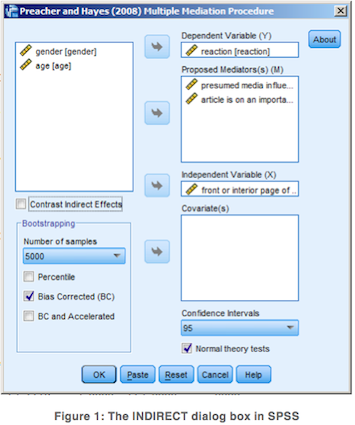I am Andrew F. Hayes, an associate professor at Ohio State University, where I serve on the faculty in the School of Communication and the Department of Psychology. Though formally trained as an experimental social psychologist, I am a quantitative psychologist by vocation and at heart and have devoted the last several years thinking and writing about statistical mediation analysis.
The field of Evaluation can take the credit for kicking off the mediation analysis frenzy with the publication of Judd and Kenny’s (1981) article in Evaluation Review. With the advice offered in that article and a related follow up by Baron and Kenny (1986), rigorous mediation analyses became easy to undertake and, arguably, almost essential in order to get intervention research published. What evaluators may not be aware of is how much things have changed in mediation analysis since the 1980s. We have entered a “new millennium” in statistical mediation analysis with new rules and new ways of thinking about how mediation questions are tested. Among the changes are a rejection of the Baron and Kenny steps–most importantly the idea that one must initially establish an effect to be mediated before seeking evidence of an indirect effect, as well as the use of modern methods of indirect effects hypothesis testing that don’t make unrealistic statistical assumptions.
Rad Resource: Many of these changes and new developments are discussed in my recent Communication Monographs article “Beyond Baron and Kenny: Statistical Mediation Analysis in the New Millennium”.

Rad Resources: These modern approaches are even easier to implement than the Baron and Kenny steps, using popular software packages. Along with my colleague Kris Preacher (University of Kansas), I have developed a variety of tools that make modern mediation analysis literally point-and-click–many of which can be permanently installed right into the menus of SPSS. Most of our procedures have SAS versions as well. You can download these tools at no charge from my web page, and each comes with documentation and has a companion journal article that describes the foundation of the method.
Rad Resource: If you run into trouble using some of our tools, you can always seek the support of myself, Kris, and other users through our “Statistical Moderation and Mediation Analysis” Facebook group.
Conversations with colleagues and users suggests that it is becoming increasing difficult to publish an analysis of mediation using ‘old millennium’ approaches. You really want to check out what is happening these days and enter the 21st century of statistical mediation analysis. Oh, and if it is “moderation” rather than “mediation” that strikes your fancy, well, I have a tool for that too!

Hi Andrew,
Thanks so much for all of your hard work with creating the SPSS macros. They have been a time-saver on multiple occasions!